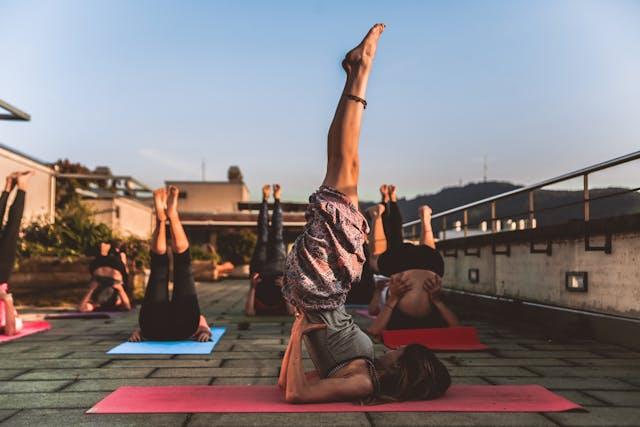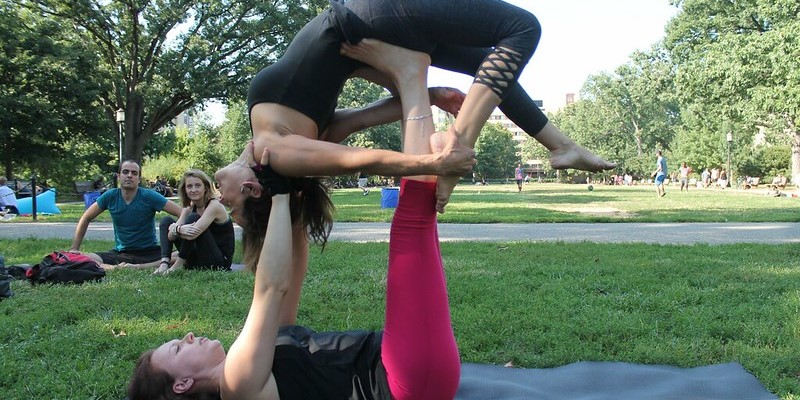Yoga is an ancient practice that focuses on the mind and the body. It involves breathing exercises, physical movement, and meditation. Campus yoga programs can offer many benefits to students. They can experience physical, social, and mental benefits from becoming part of a yoga community.

Physical benefits of yoga
Some of the physical benefits include improvements in:
- Flexibility
- Strength
- Stamina
- Balance
- Coordination
- Weight
- Sleep
All students can gain physical benefits when doing yoga regardless of their fitness level, flexibility, shape, or size. They may battle to find the time for yoga classes when they have so many academic commitments. The physical benefits make trying to find the time worthwhile.
They may be able to save time by using professional online writers to help them with a personal statement and other writing services. Well-known site EduBirdie provides personal statement writing services and placing an order for a personal statement at this paper service involves filling in an order with the instructions. A writer that you choose will follow these instructions, meet deadlines, and ensure confidentiality. A deposit stays in the student’s account until the order is ready. The writer of a personal statement will present the information in a way that allows the personality, skills, and knowledge of a student to shine through.
Mental health benefits
On college campuses across the U.S., students are taking care of their mental health by doing yoga. Physical activity is known to create a sense of well-being. It can help to relieve depression, stress, and anxiety. With the added benefits of meditation and deep breathing techniques, yoga helps students develop coping skills to better handle academic stress. They also develop improved self-esteem. Breathing exercises help them to regulate their responses to difficult emotions. Yoga students tend to be more reflective than reactive to tough situations.
Social health benefits
Many students report issues with roommates, feeling lonely, and battling with relationships. Participation in classes with other students gives yoga a beneficial social component. They can identify with other students and talk about their common interest in it. This can lead to building relationships and feeling more connected.
Growing clubs in universities
There are many factors that go into growing clubs in universities, such as the schedule, types of classes, and their location. Even the equipment on offer can be a draw card for students.
Diversity of classes
In order to grow a community, everyone should have access to diverse classes around the clock to fit in with their busy schedules.
Forms
There are many different forms of yoga but modern ones often focus on asana. It’s worthwhile offering a popular form to attract more participants.
Location of classes
Where the classes are situated is another important factor. They should be convenient for them to access between classes.
Equipment
Yoga has relatively few equipment requirements and students can bring their own mats. Blocks made of cork, foam, or bamboo can help beginners to achieve certain positions. Yoga straps can help them to improve their flexibility. Wheels are large, hollow, circular props that can relieve tension and pain. Foam rollers are useful for warming up or cooling down.
Prices
Students generally do not have much disposable income. Classes should be budget-friendly so they are affordable to students. Offering some free classes could inspire students to try out yoga for the first time.

Tips to help with building a yoga community
- Show that the well-being of students matters by offering additional resources. This may be in the form of holistic teachings, Ayurvedic cooking classes, etc.
- Open events to celebrate certain special days, such as Earth Day, can help to attract new students.
- Giving back to surrounding communities by holding fundraising events can also encourage them to join. This contributes to a social cause as well, which in turn proves to be valuable to the participants.
- The vibe of college groups is important. If a group creates the impression of exclusivity it can prevent the community from growing. Students may feel too intimidated to join. This is also contrary to the spirit of yoga which is to be kind and inclusive.
- The physical environment should be relaxing and comfortable so students feel they start unwinding the minute they come through the doors.
- Students can take part in a photo shoot. They can do some poses, take photos, and enjoy cupcakes and tea. Students are likely to share these photos on social media and attract the attention of other students.
- Organize a retreat to solidify old relationships and build new ones between students who attend different classes.
Some of the challenges to building a yoga community are the time commitment, a lack of motivation, and other competing interests. This is why making an effort to build a yoga campus community is necessary. Students need to develop motivation by understanding the many benefits of yoga and how it can improve their academic life.
Conclusion
Some of the advantages to students of a yoga community on campus are better physical health, improved mental health, and greater social interaction. Yoga can give students the coping skills they need to excel in the college environment. Growing such a community can have its challenges. Using some of the above tips and suggestions can help to attract more students and build the campus community into a healthy, vibrant one.















